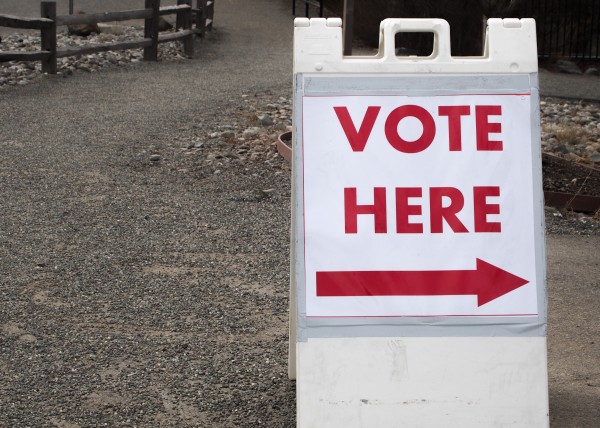
When Anchorage voters head to the polls for municipal elections on Tuesday, residents in every corner of town will be choosing representatives for the Assembly. More than half of the 11 seats are up for election, which could tip the body’s balance of power (you can hear our district level candidate forums here). There are also two school board races.
But voters will also weigh in on a long list ballot initiatives. For most people living in Anchorage, there are eight ballot measures to vote on. The majority are about bonding — that is, borrowing money at a low interest rate to pay for immediate needs. Of the other two ballot propositions, one involves park access in South Anchorage, and the other concerns how taxi cabs ought to be regulated.
Propositions one through six are all about bonds — about $105 million worth. That’s a lot of money, but it’s not too far from the amount in bonds being retired this year. So, even if all six propositions pass, the change to your property tax bill wouldn’t be dramatically different. According to the Municipality, the added costs from the debt service and new operating costs will be a $13.54 per every $100,000 of a property’s value if all the general purpose bonds are approved. That doesn’t include the sizable school bond, which on its own is $58.5 million. The same proposal failed last election. But according to the Anchorage School District, roughly the same amount of debt is being retired, making the bond effectively cost-neutral from what property owners saw last year.
So, what’s actually in these bond proposals?
The School District one is primarily to replace roofs and heating systems at schools, along with structural and seismic improvements for two facilities. ASD said it already spends $21 million in upkeep and preventative maintenance, and that bonding is a less expensive way to cover major improvements.
Proposition 2 deals with public safety and transit. The biggest item would be the purchase of two new ambulances. At $650,000, the vehicles themselves aren’t particularly expensive, but the measure also includes $2.3 million in yearly operations and maintenance costs. That money would fund the 14 positions to staff the new ambulances. Paying for those jobs through a bond keeps the city’s budget technically below the tax-cap, but fiscal conservatives are criticizing the move.
Proposition 3 would put $3.6 million toward park and trail improvements within the Anchorage Bowl. Proposition 4 is a large package of road and drainage infrastructure projects totaling nearly $37 million, and falling only on homeowners within the Bowl — so residents in Eagle River, the Hillside, and from Turnigan Arm down to Girdwood won’t bear any costs. Propositions 5 and 6 deal with improvements for fire and police facilities and equipment, and comes up to $4,020,000.
That does it for the bond issues.
Ballot Measure 7 would slightly expand the taxable boundary of the municipality’s Parks and Recreation Service Area. The move would add about a thousand parcels to the APRSA, potentially bringing a little bit more tax money into the municipality. But supporters say the real reason for the move is to improve access to popular trails and park areas in south Anchorage by putting them under city control, which means the Parks Department would be able to finally address the concerns of area residents.
“The services provided in the parks and recreation service area could include everything from trail-head maintenance to informational signage to parking areas,” Municipal Attorney Bill Falsey said. “Right now, none of that can really be extended to the Stuckagain Heights area or Bear Valley.”
A “yes” vote on Measure 7 would absorb sections of the municipality north of McHugh Creek into the APRSA, though have no bearing on the service areas for Eagle River or Girdwood.
Lastly, Ballot Prop 8, the taxi ordinance. Falsey had clear words on what this measure does and doesn’t cover.
“Proposition 8 has nothing to do with Uber directly,” he said, referring to the transportation network company that’s been at the center of separate Assembly and Legislative bills in the last few months.
Instead, Prop 8 basically asks voters whether they want more taxis permitted in Anchorage. But the question is posed in a confusing way. A few months ago, the Assembly passed an ordinance changing how the city oversees taxi licenses, and increasing the number of cabs allowed by more than a hundred over the next five years. Supporters say this will put more cabs on the road, improving service for customers. Opponents, like drivers and the cab companies, insist they are barely making a living with the current number of cabs in the city.
A “yes” vote would repeal that ordinance and keep the current cab system in place. A “no” vote would uphold the Assembly’s measure, add more cabs, and put the municipality on course to have an open permit system.
Polling locations across the city are open from 7 a.m. – 8 p.m. on Tuesday. You can find your polling location here.
Turnout in municipal elections is typically much lower than for national elections in November. Last year, less than 25 percent of eligible voters cast ballots in Anchorage.
Zachariah Hughes reports on city & state politics, arts & culture, drugs, and military affairs in Anchorage and South Central Alaska.
@ZachHughesAK About Zachariah




